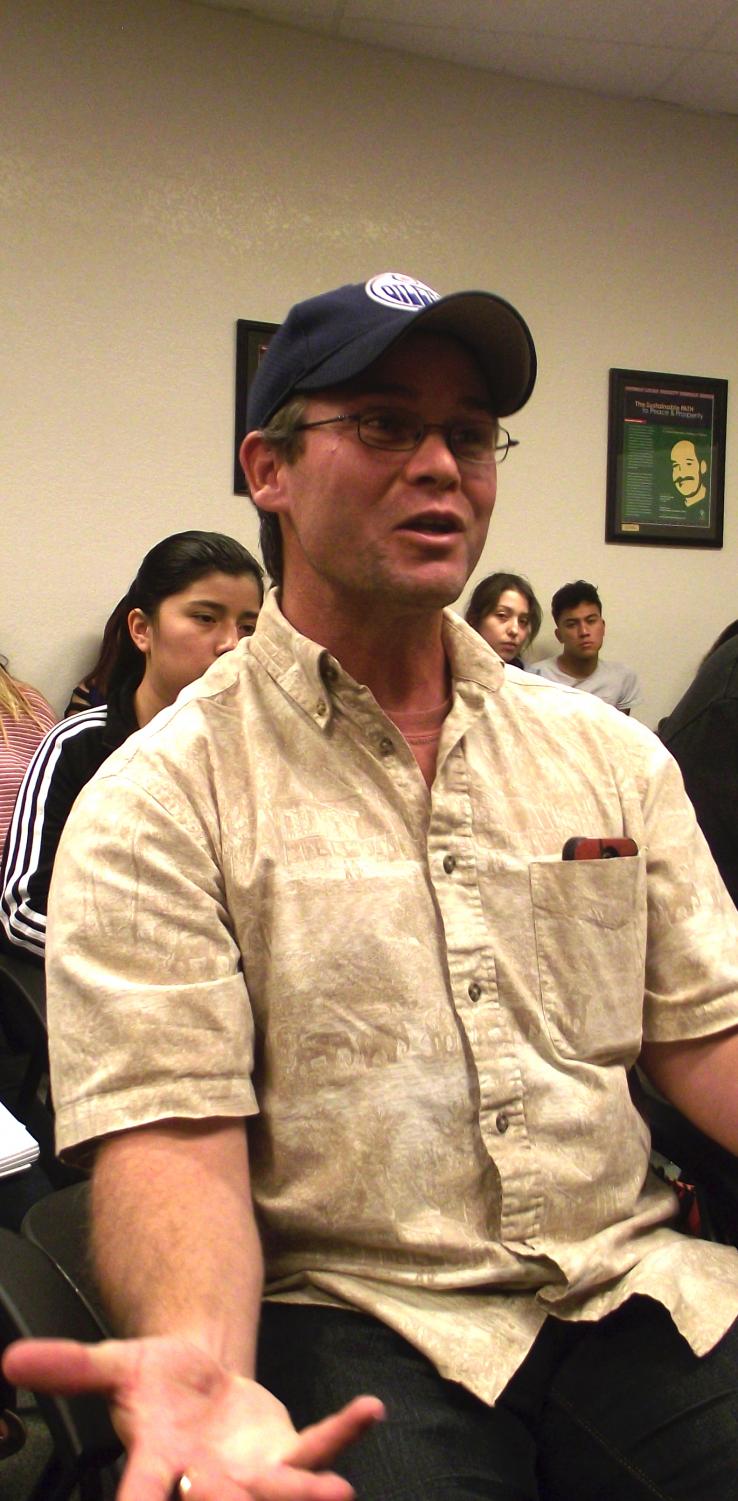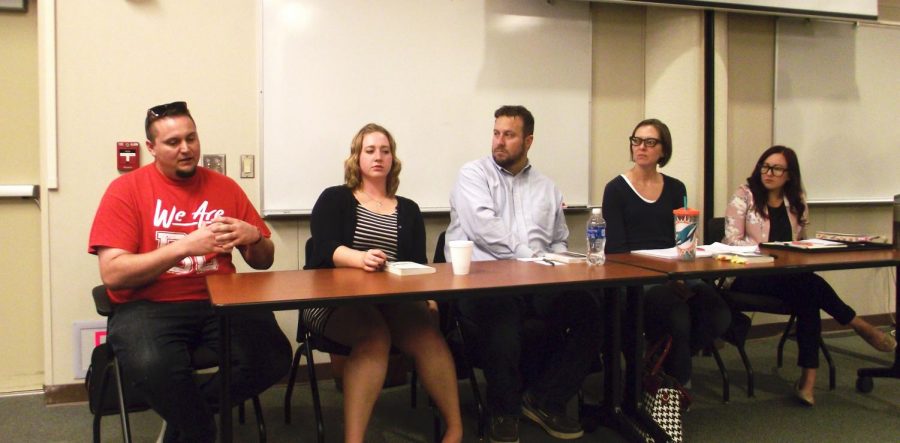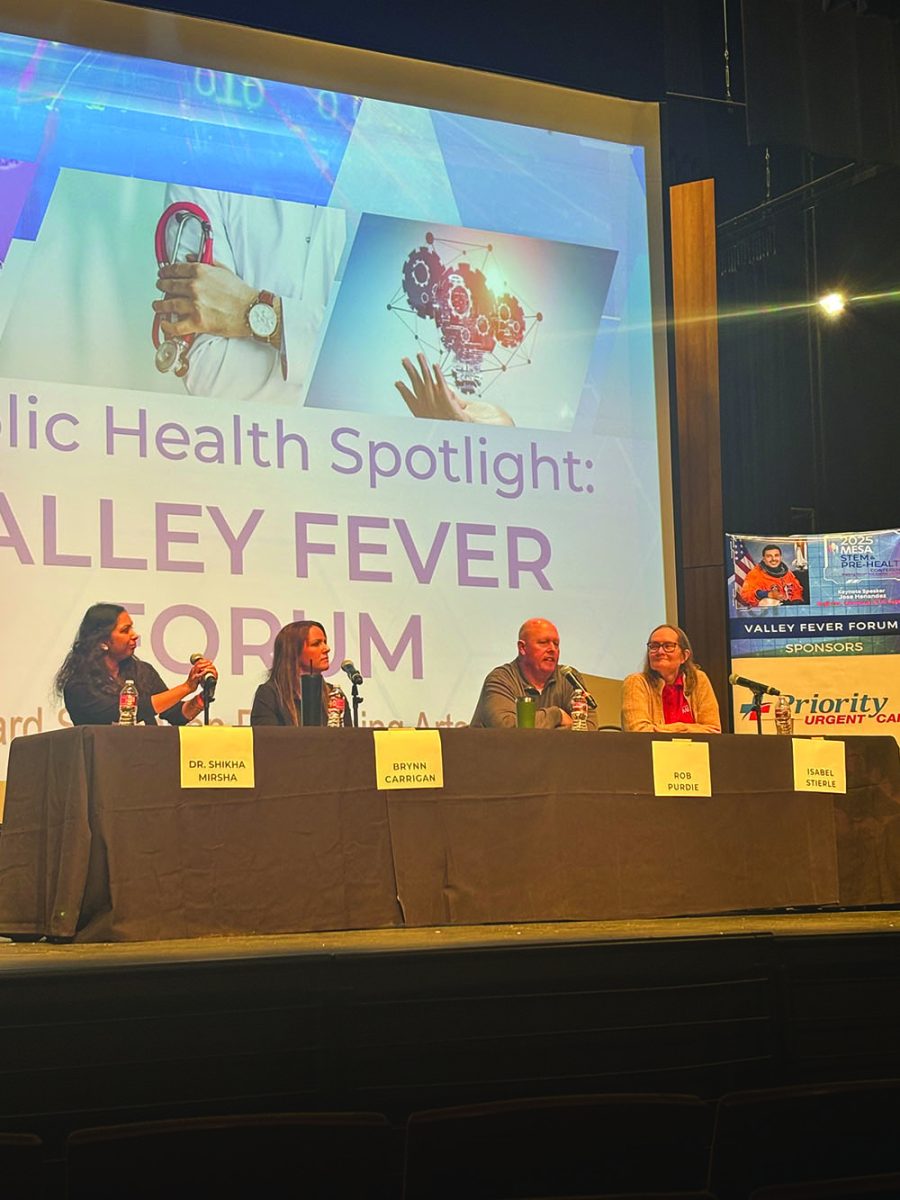One Book panel discusses poverty
The other panelists listen as BC student James Tompkins (far right) shares his opinion of the book.
November 1, 2017
A panel was held in the Norman Levan Center at Bakersfield College on Oct. 19 to discuss the book “$2 a Day: Living on Almost Nothing in America” by H. Luke Shaefer and Kathryn Edin as part of the One Book, One Bakersfield, One Kern Project.
After opening remarks by Jack Hernandez, the center’s director, about how people need things like food and shelter before they can reach self-fulfillment, the moderator Oliver Rosales gave his own opening statement about the book.
“This book was selected … because of the challenges related to poverty and unemployment here in the San Joaquin Valley. According to recent census data, between 2011 and 2015, 23.5 percent of Kern County’s population lived below the federal poverty line and of that number, 32 percent are children.” Rosales, a BC history professor, began.
“Although this book is mostly a qualitative analysis or narrative snapshot of how a set of families experienced poverty in places like Chicago’s Southside neighborhoods, industrial rustbelt cities like Cleveland, New York city, and the Mississippi Delta, many of these stories of struggle and survival in the face of poverty are all too familiar for Kern County.”
Rosales then introduced the panel, which included Endee Grijalva, the program manager for adult education at BC, Mia Ocean, a BC Psychology professor, Justin Bell, a BC English professor, Faith Bradham, a BC librarian, and James Tompkins, a BC student and Student Government Senator.
Ocean, who has a history as a clinical social worker, began the discussion by bringing up some of the wording in federal block grants for state welfare that encouraged marriage for needy parents who need assistance.
“I find that exceptionally disturbing that the government would be talking about marriage as a way to kind of solve poverty rather than looking at the structural inequalities that are actually making that happen,” she said, and expressed concern that there was not a focus on education as well.

Chris Brantley, a Bakersfield College student majoring in elementary education, asks
the panel what they think is the best way to battle poverty and get involved on Oct. 19.
Later, Bell discussed preconceived notions and what people believe to be true about the poor. “It starts with Ronald Reagan’s welfare queen that they talk about in the book, and runs all the way up to today where they’re still having surveys where they talk about 60 to 70 percent of people wanting to help the poor and thinking that the government isn’t doing enough. But when you throw the word ‘welfare’ in there, all of a sudden that number drops because welfare is a dirty word,” he said.
The panel went on to discuss their thoughts and criticisms of the book, and how libraries, colleges and shelters help address local poverty.
Eventually, audience members were given the opportunity to ask questions and share their own thoughts on the book.
One student, Chris Brantley, talked about the homeless population in California compared to where he lived in Nebraska and what resources were available to them. “As I read through the stories, some of them were very disheartening, and I was like, ‘some wouldn’t make it if it wasn’t for those programs,’” he said, and then asked about what could be done to help solve poverty and how students could help. The answers given from the panel ranged from philanthropy to suggesting how to get involved in legislation.






